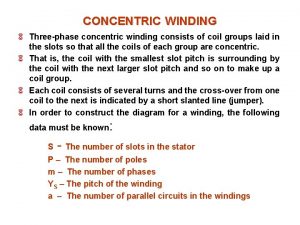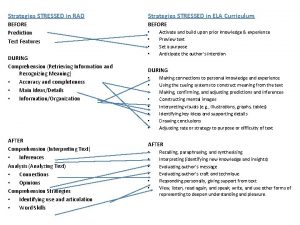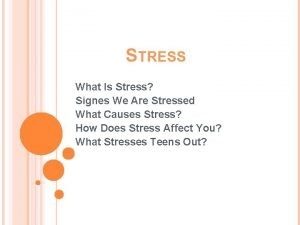Pitch vs Stress in words Stressed words are










- Slides: 10

Pitch vs. Stress in words

Stressed words are: • the important words of the sentence, the words that comprise the contents of the dialog and help the listener and speaker focus on the same information • said with a slight pitch change, a little louder, or for more time than surrounding words • used to create the underlying rhythm of English.

Pitch words are: • the most valuable and relevant words, the words that allow the interpretation of the dialog. • said with a greater change in pitch, loudness, or length of time than stressed words.

Loudness and Pitch

Pitch waves

Wavelenghth = Pitch Wave. Amplitude = Loudness

Intonation • It gives us clues about the attitude of the speaker, how he feels about what he is saying. • We can get a good idea, for example, as to whether someone is interested, bored, being honest or lying and so on.

Two basic patterns of intonation created by David Brazil Refering tones (r) • Fall-rise tone: The speaker is referring to information that he presumes to be shared between the speakers. • In questions we use referring tone to make sure what we are saying is correct, or to check information. Proclaiming tones (p) • Falling tone: used to indicate that the speaker is expressing information that is presumed to be new, or is adding something to the discussion. • We also use it to give facts, express opinionswe believe to be true, or to ask fornew information.

Proclaiming tone

Referring tone
 Insidan region jh
Insidan region jh Cyclic pitch vs collective pitch
Cyclic pitch vs collective pitch Back pitch and front pitch
Back pitch and front pitch Concentric winding induction motor
Concentric winding induction motor Coil pitch and pole pitch
Coil pitch and pole pitch Kern method heat exchanger design
Kern method heat exchanger design Helix angle of propeller
Helix angle of propeller Pitch 2 pitch chanhassen
Pitch 2 pitch chanhassen True stress and engineering stress
True stress and engineering stress Normal stress
Normal stress Chapter 10 stress responses and stress management
Chapter 10 stress responses and stress management



















